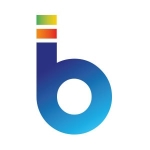What is our primary use case?
We primarily sell Power BI licenses.
Mostly, we focus on the retail industry. Usually, we are using the Power BI reports for dashboards. We are also providing our customers with some data warehouse reporting. Basically, we do long-term categorization of stock and inventory numbers and sales figures so that they can compare the sales and stocks to the inventory numbers.
We tend to deal with physical inventory reports. We tend not to deal with the solution for financial operations.
What is most valuable?
The solution has different licensing tiers.
The product can scale if you need it to.
Technical support is quite good.
With the cloud deployment, there's no setup required.
The product works well for small or mid-level organizations.
What needs improvement?
The solution's stability could be improved. In the retail industry, due to issues with information updating and data uploading. Clients may end up pricing items wrong as they could accidentally base their choices on old or wrong data.
The licensing needs improvement. There needs to be a middle option between Pro and Premium versions. It could also be less expensive.
For how long have I used the solution?
While we have experience with Microsoft tools for the past ten years, I personally have had experience with Microsoft BI for the past two or so years.
What do I think about the stability of the solution?
The solution is not really stable. I've faced a lot of limitations especially in terms of some data flows updates. We have faced some exceptions. Right now, we have created a case for Microsoft in order to solve some problems we've been having as, right now, there's some sort of system fault.
While the platform is a little more stable, the big problem is the latency issues around customer updates.
In a recent project, in Sweden, we faced an exception in Power BI from the update path. Whenever we refresh the animations and the fact tables, we faced something that said we couldn't upload the data. After 20 minutes we tried to refresh again. We didn't change anything with our reports or platform or anything related to infrastructure or schema. We didn't touch anything. An yet, the data is updated successfully. That leads us to ask the question: what was the problem 20 minutes ago? We still don't know the answer.
That is why we need some stability for the update service. We are deciding some business decisions based on this data. If this data is not updated, we may decide to take the wrong path.
This is very important in the retail industry. For example in the grocery field, sometimes with vegetables or fruits or other products, customers need to decide to change the prices within lock days. They need to decide, based on demand, if they should increase or lower prices. They can't make the correct decisions if the numbers don't update.
What do I think about the scalability of the solution?
The scalability potential actually depends on your licenses. Microsoft provides three licenses. One of them is absolutely free. Another is called Pro. Yet another is per user or Premium. There is a huge difference between the Pro license and the Premium license. There is no need to scale the Pro license or other license models.
When you put the on-premise reports, you can scale out or scale up. It depends on your existing resources. However, in the services as a software (SaaS) version, it actually comes with Microsoft's units or Microsoft resources.
How are customer service and technical support?
We have an ASFP agreement with Microsoft. As a Gold Partner, Microsoft is pretty good and responding automatically and helping us resolve issues.
If a partner does not have an ASFP agreement, they tend to have to go to forums or try to Google answers to their problems.
We are aware that sometimes when we make changes to BI, the solutions might be complex. There might be SQL involved, which needs to be taken into account, for example. We may have to look into other resources and other tools to see if there are interactions that are the issue. However, Microsoft is quite helpful as we work through issues. We're quite satisfied with their level of support.
Which solution did I use previously and why did I switch?
We also work with and sell MicroStrategy in Turkey. 95% of the MicroStrategy projects have been completed with our company. It is a direct competitor with Power BI. My company commonly does consulting for some small and medium markets and for that we recommend Power BI. Whenever we talk about enterprise-level solutions, the company we will use is MicroStrategy.
How was the initial setup?
There isn't much of an installation process, as the solution is on the cloud.
What's my experience with pricing, setup cost, and licensing?
There is a free license, however, it is limited. The Premium license and the Pro license functionalities are very different. Whenever we talk with our customers, they ask "Should we chose the Premium?" We say that "No, you don't need to, as it's too expensive. It is much more expensive than the Pro license." However, the Pro license functionality is not enough for some customers. There is no middle between Pro and the Premium. We need something in between.
The Pro license is maybe suitable for SMBs, small and medium-sized businesses. The premium version is ideal for companies that need to scale up and out.
There also may be some additional costs that can drive up the price.
What other advice do I have?
I prefer this product and I suggest Power BI to all customers, however, we know that if Power BI is a new idea, we make sure to show company-specific data or analytics for analyzing the data and how this solution can analyze everything quickly. That said, it's not for everybody. If all companies tried to put all their reporting expectations in the Power BI, it would not fit their expectations.
It's not a standalone solution. You need other items in your toolbelt. You need, for example, something that can handle raw data, you need warehousing, et cetera.
In general, I would rate the solution eight out of ten.
Which deployment model are you using for this solution?
Public Cloud
Disclosure: My company has a business relationship with this vendor other than being a customer. Reseller
















